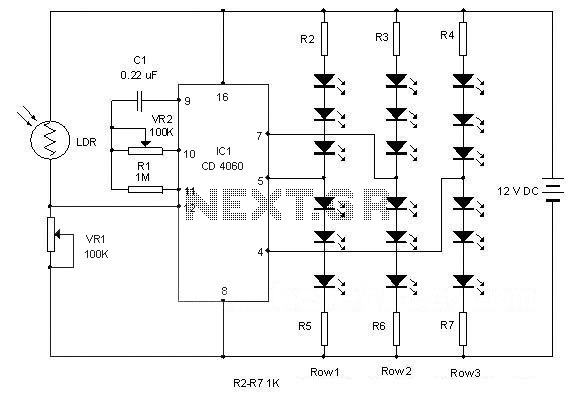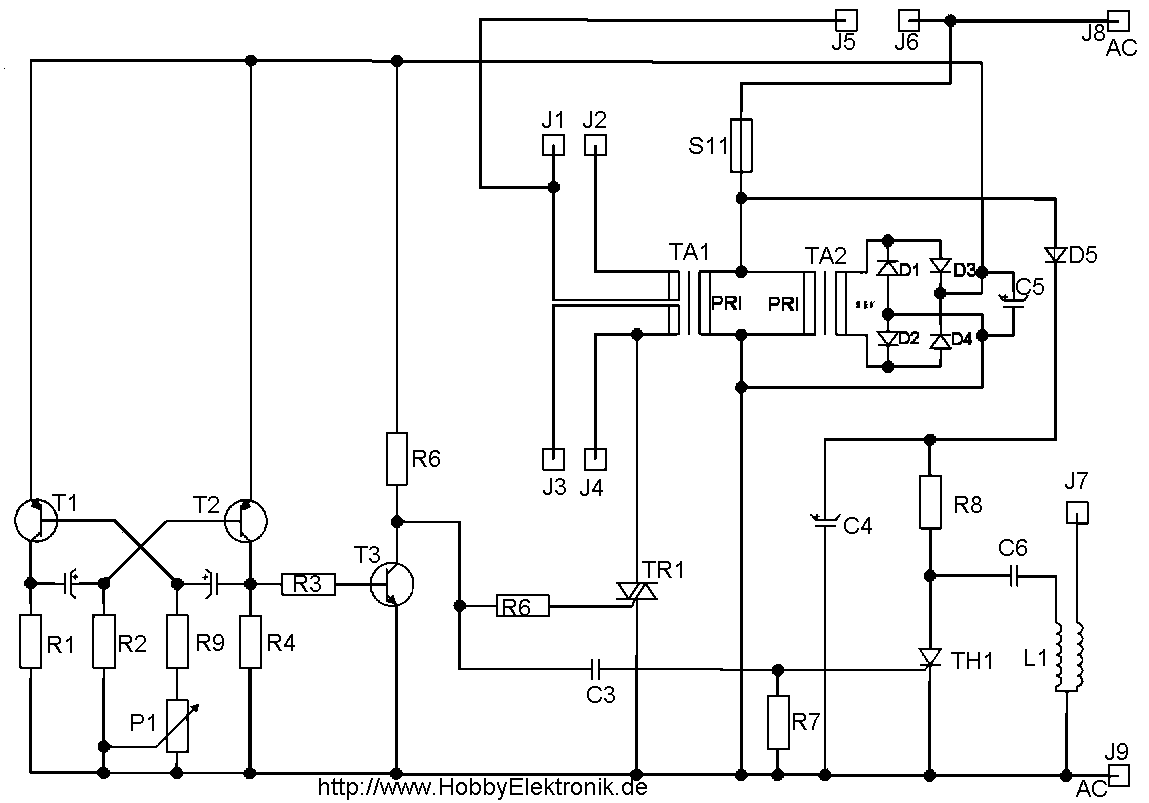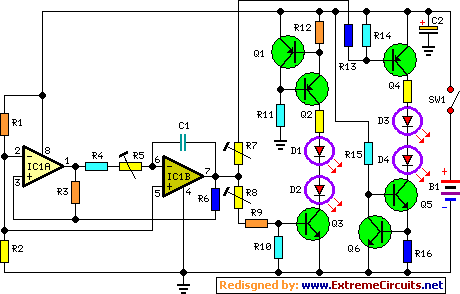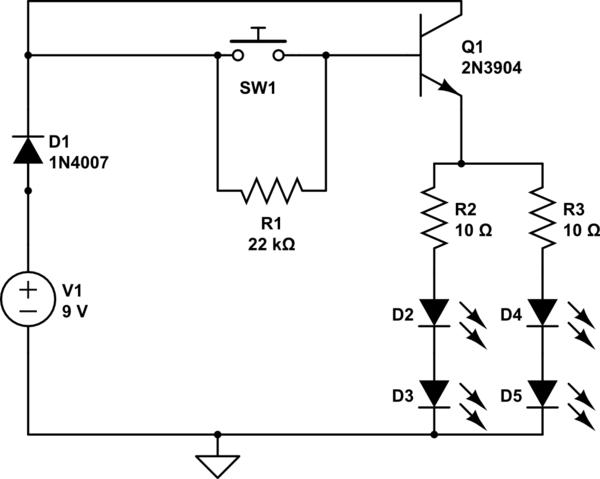
Sequential Led Flasher With Reversible Direction
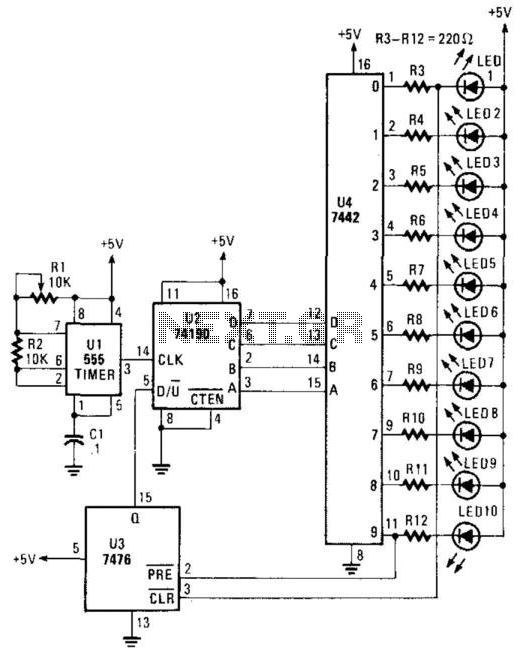
A 555 timer controls a 74190 up/down counter. The 74190 drives a BCD decoder driver 7442. The 7476 is utilized to reverse the count at 0 and 9, resulting in an up-down-up-down counting sequence.
The circuit utilizes a 555 timer configured in astable mode to generate a continuous square wave output, which serves as the clock signal for the 74190 up/down counter. The frequency of the clock can be adjusted by changing the resistor and capacitor values connected to the 555 timer. The output frequency directly influences the counting speed of the 74190.
The 74190 is a synchronous up/down counter that can count in both ascending and descending order based on the control inputs. It features a binary-coded decimal (BCD) output, which is essential for interfacing with the BCD decoder driver. The 74190 can be set to count up or down by controlling the direction input, allowing for versatile counting applications.
The BCD decoder driver, 7442, takes the BCD output from the 74190 and translates it into a format suitable for driving display devices or further processing. The 7442 has active-low outputs, which means when a specific BCD input is present, the corresponding output will go low, enabling the connected display or logic circuit.
To achieve the desired counting sequence, the 7476 dual J-K flip-flop is incorporated into the circuit. This component is responsible for reversing the count when the output reaches 0 or 9. By connecting the outputs of the 74190 to the J and K inputs of the 7476, the counting sequence can be manipulated. When the counter reaches 0, the flip-flop toggles, causing the counter to switch to counting up, and similarly, when it reaches 9, it toggles again to count down. This configuration results in an up-down-up-down counting sequence, providing a unique counting pattern suitable for various applications.
Overall, this circuit design efficiently combines the functionalities of the 555 timer, 74190 counter, 7442 decoder, and 7476 flip-flop to create a versatile and effective counting mechanism. A 555 timer clocks a 74190 up/down counter. The 74190 drives BCD decoder driver 7442. The 7476 is used to reverse the count on 0 and 9, which results in an up-down-up-down count sequence.
The circuit utilizes a 555 timer configured in astable mode to generate a continuous square wave output, which serves as the clock signal for the 74190 up/down counter. The frequency of the clock can be adjusted by changing the resistor and capacitor values connected to the 555 timer. The output frequency directly influences the counting speed of the 74190.
The 74190 is a synchronous up/down counter that can count in both ascending and descending order based on the control inputs. It features a binary-coded decimal (BCD) output, which is essential for interfacing with the BCD decoder driver. The 74190 can be set to count up or down by controlling the direction input, allowing for versatile counting applications.
The BCD decoder driver, 7442, takes the BCD output from the 74190 and translates it into a format suitable for driving display devices or further processing. The 7442 has active-low outputs, which means when a specific BCD input is present, the corresponding output will go low, enabling the connected display or logic circuit.
To achieve the desired counting sequence, the 7476 dual J-K flip-flop is incorporated into the circuit. This component is responsible for reversing the count when the output reaches 0 or 9. By connecting the outputs of the 74190 to the J and K inputs of the 7476, the counting sequence can be manipulated. When the counter reaches 0, the flip-flop toggles, causing the counter to switch to counting up, and similarly, when it reaches 9, it toggles again to count down. This configuration results in an up-down-up-down counting sequence, providing a unique counting pattern suitable for various applications.
Overall, this circuit design efficiently combines the functionalities of the 555 timer, 74190 counter, 7442 decoder, and 7476 flip-flop to create a versatile and effective counting mechanism. A 555 timer clocks a 74190 up/down counter. The 74190 drives BCD decoder driver 7442. The 7476 is used to reverse the count on 0 and 9, which results in an up-down-up-down count sequence.
